The Haswell Review: Intel Core i7-4770K & i5-4670K Tested
by Anand Lal Shimpi on June 1, 2013 10:00 AM ESTCPU Performance: Going Even Further Back
If you want specific comparisons to other CPUs, all of the Haswell data is in Bench. I took the liberty of putting together a few charts comparing the 4770K to some key older parts to put its performance in perspective.
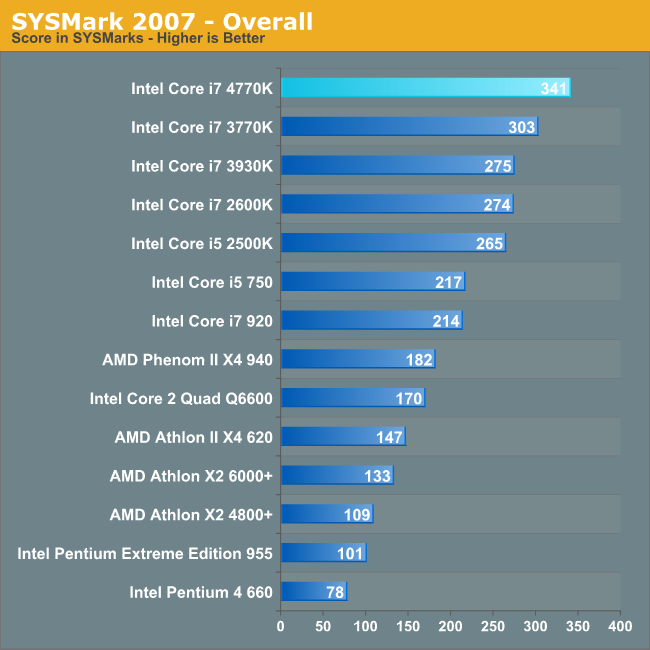
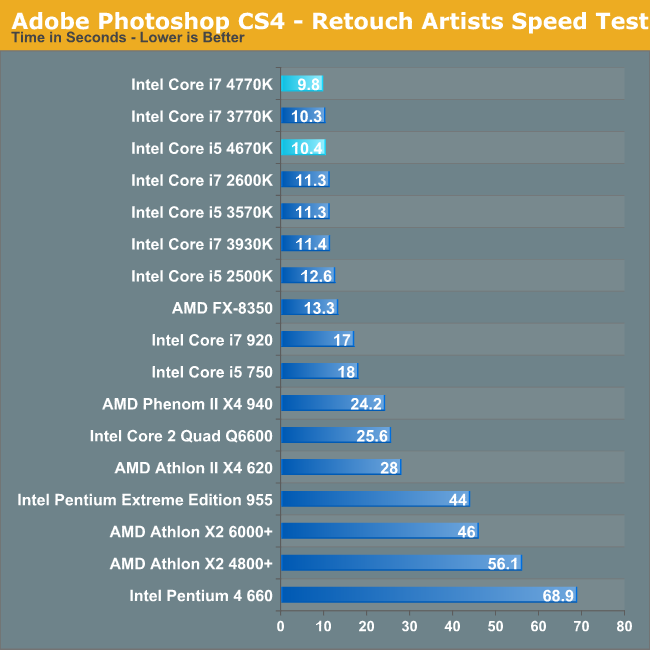
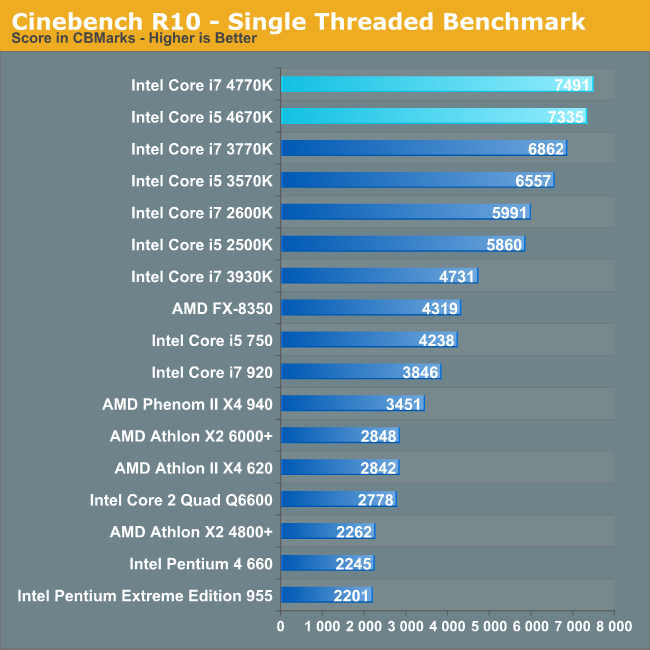
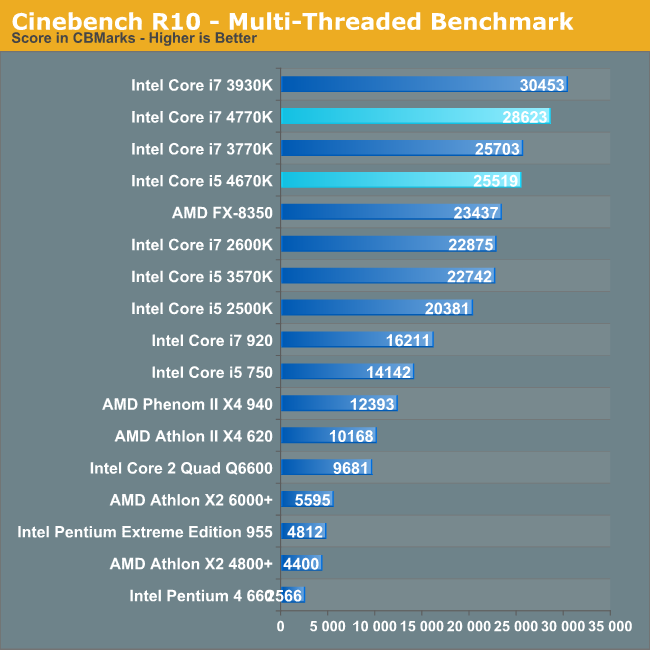
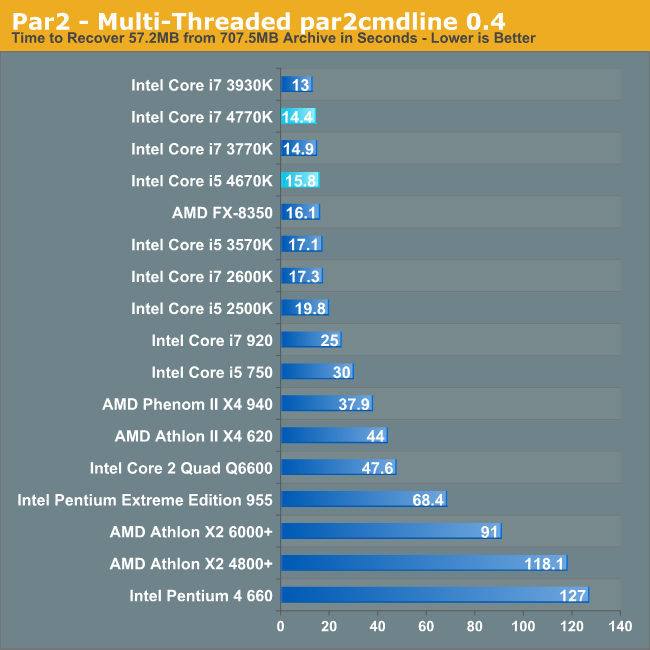
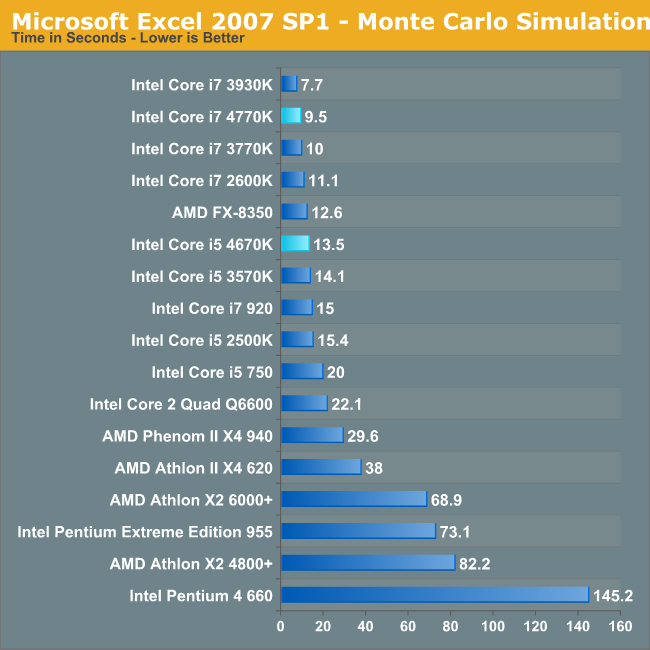











210 Comments
View All Comments
CajunArson - Saturday, June 1, 2013 - link
Great review, but I have a question about this rather cryptic comment for bclk overclocking:"All CPUs are frequency locked, however K-series parts ship fully unlocked. A new addition is the ability to adjust BCLK to one of three pre-defined straps (100/125/167MHz). The BCLK adjustment gives you a little more flexibility when overclocking, but you still need a K-SKU to take advantage of the options."
Does that mean you cannot do bclk overclocking on the non-K series parts? For example, are you saying that a 4770 (non-K) part cannot be used with a bclk overclock? Or are you just saying that the K-series parts give you all the options including unlocked multipliers? Can you clarify this?
Rajinder Gill - Saturday, June 1, 2013 - link
All you can do on the non K parts is 100 bclk +- 5%.smilingcrow - Saturday, June 1, 2013 - link
It doesn't seem cryptic to me!kasakka - Saturday, June 1, 2013 - link
Too bad there are no temperature comparisons. Would be interesting to see if Intel has improved the TIM under the heatspreader.That said, now I'm glad I didn't wait for Haswell as it doesn't seem to have much to give over Ivy unless you use the intergrated GPU.
A5 - Saturday, June 1, 2013 - link
Other reviews have it as notably hotter under load, fwiw. Probably due to the voltage regulators.HisDivineOrder - Saturday, June 1, 2013 - link
Now that AMD has mostly fallen back to the mid-range and low-end, this is a similar situation to where the new Geforces landed.You get a bit more performance for about the same money. For the GPU side, the benefit was mostly in superior cooling solutions all (supposedly) having to be equivalent to the excellent Titan Blower. For the CPU side, the benefit is that we have lower idles. These chips stay in idle a lot, so it's a gain, but this isn't a chip that's going to light the hobbyist world on fire.
Just like with the GF770, you get more performance and a few fringe benefits (that should have been there all along, ie., 6 SATA3 connections) for the same as you would have paid for the equivalent part last week.
I don't see much here to make me want to upgrade from my IVB 3750k, though. I'm leaning toward picking up a used GF670 and SLI'ing now, given all the givens.
The truly disappointing part of all this is if this is truly the last new desktop release for two years. Imagine me going 3+ years before I even FEEL an itch to upgrade my processor. I sincerely pray that AMD gets its act together and puts some competitive pressure on Intel at the mid-high end (ie., 2500k, 3570k) with a truly great CPU. I live in hope that the 8350 successor (based on Steamroller?) will be that part, but AMD needs to update their chipsets big time.
Until then, I think all we can expect from Intel and nVidia is more of the same, which is the worst part of both the 700 series and Haswell. Neither felt compelled to do more than offer minor improvements in performance because neither is feeling any competitive pressure of any kind.
That's why Intel IS pushing the power argument and fighting that fight hard. Because ARM *is* applying competitive pressure.
Hector2 - Saturday, June 1, 2013 - link
Even without competition, Intel is still by economics to keep pushing transistor sizes and die sizes smaller and smaller --- it still lowers their costs and they make more money. This also means they keep getting faster and require less and less power. What competition does, besides lower prices, is drive architectural changes that add more die size (like an integrated GPU and FIVR)JDG1980 - Saturday, June 1, 2013 - link
Keep in mind that an increasing percentage of desktop/laptop PCs are now in the business world (since light-use consumers have often moved towards tablets and smartphones). If you're doing office work, then lower power use on idle/light load is a big deal. Office PCs almost never run balls-to-the-wall. In fact, usually the only time the CPU even comes close to being completely pegged is when the mandatory virus scan runs (and even then, it's often HDD-bound).leliel - Saturday, June 1, 2013 - link
I'm still on a Lynnfield 750 (as are a few other commenters, I note) and this system is now 3.5 years old without me having had the itch to upgrade or even overclock the CPU. I have been eyeing Haswell because I know I will be making a fresh build at the end of the year, but that's due to circumstance and not need. 30% clock increase in four years is nothing like the old days... but frankly it's nice to be able to keep up in everything just by swapping out video cards.Klimax - Sunday, June 2, 2013 - link
I doubt we will see large increases in future. We need new algorithms. (Current ones are the limit) Why? Because major performance increases would require significant increase in complexity and GPU showed what that causes.And AMD won't and cannot change it.